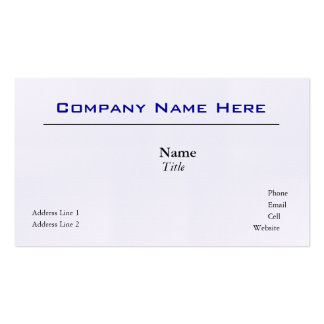Meet John. John is a confident person. He works in the corporate sector. He is a professional and an asset to his firm. He closes the deal every time. So, he enjoys a good position in his firm. His finances are good, too.
You are an online service provider. Recently, you have launched a product; an advanced planner. John fits the description of your targeted audience. He is at the top of the chain, he needs to maintain a schedule, he is educated enough to use the planner and he is interested in using new technologies and gadgets. You think that pitching to John would be successful and you will add a customer to your list.
You wrote an excellent e-mail for John and hit the ‘send’ button. You are eagerly waiting for John to reply back in affirmative.
What happens?
John never replies.
He never purchases your planner.
Confused?
John was a perfect prospect. He should have converted. He fits the demographics.
The reason for this is; demographics are not enough. Merely the fact that a person falls in the targeted audiences does not mean that he will make a purchase from you.
Google suggests that you should be present for your targeted audiences for every micro-moment. These micro-moments being ‘want to go,’ ‘want to know,’ ‘want to buy’ and ‘want to do’ moments.
We are here with a concept; a concept beyond knowing the demographics. It is about knowing the psyche of your audience.
The human mind is the most complex machine ever known. Every human being has millions of thoughts and it is impossible to know which thought makes him buy something and which one will keep him from hitting the ‘buy’ button. To make sales and get the maximum response from the audiences for each pitching, you have to target their psyche and for that, you have to know them.
Here are some examples of how to produce different prospects with different psyches.
Audience No.1: Marie
Marie is a sweet innocent girl working in the corporate sector. She responds positively to everything. She is hardworking and she needs an efficient planner.Approach: In order to woo Marie, you do not have to do much except drafting a promising e-mail. She readily believes every advertisement that she sees. Many a time, she has purchased products on the recommendations from her friends. She is in need of a planner and will perform a search for one. You have to be present on the search page for her. You should be present on the social media platforms too. Since advertisements work for Marie, invest in native advertisements, PPC (Pay Per Click) and Facebook lead ads. If there are some promotional offers going on, it should be mentioned in the outreach e-mail. The reviews of the product can help further.
Audience No. 2: Ann
Ann is an adventurous person. She likes to buy new products because she wants it all. She usually does not think about the utility of the product before buying it. She may regret buying the product later but that doesn’t stop her from doing the same all over again. She just needs to see the ‘New’ tag and she gets ready with her clutch and wallet.Approach: For Ann, you just have to get the information in front of her. You do not need much convincing. She may not search for your product so, it is not necessary to optimize the search engine (although it can help with increasing the visibility). Social media representation is a must. Know what social media Ann uses most frequently. Stalk her there (but not in a creepy way). The longer you are in front of her eyes, the greater the chance that she buys your product.
Audience No. 3: Keat
Keat is a fan. He has experienced your product before and he liked it very much. He is a brand lover and he does not like to switch from one brand to another just to save a few bucks or because the advertisement looks promising.Approach: Keat also would not search for your product. He knows your address and he would just ring the bell; your address being your website. To impress Keat and to accelerate the process of conversion, you have to provide him a great user experience. The website design should be responsive and it should work smoothly on every device. Keat already trusts you, so the user reviews or advertisements do not matter. E-mail outreach and advertisements would help inform Keat about your new product.
Audience No. 4: Don
Don is a doubtful person. He does not trust anyone or anything easily. The word ‘offer’ or ‘Free’ raises his brow and he thinks that there is a catch. In actuality, he is just trying to avoid loss. For him, gaining is less important than not losing. He wants the best for the money spent. He is confused about what is the correct investment so that he may not regret it in the long-term.Approach: Don is a tough cookie. It is not easy to convince Don and if you successfully do, it is even tougher to retain him. He does not seem like a person who can be a regular customer. The correct approach is to limit the options for Don. When he sees a lot of call-to-action options, he becomes confused and bounces off. The customer reviews and testimonials can help him to make a decision faster. Gaining his trust is most important and that can be made possible by providing him a free trial of your planner for a week. Another approach that may work is promising him a money-back guarantee if the product does not work for him. Do not send him promotional e-mails while he is trying out the planner. The e-mails may confuse him more and he may unsubscribe.
Audience No. 5: John
Yes, our very own John. You know it all about John. John makes a decision after weighing the consequences. He is confident that he would always make a good decision and, so, he makes an informed purchase every time. He does not buy any product just because it is out there; he buys what he needs.Approach: To make John purchase, you have to earn credibility. You have to tell him that time is of the essence and it is important to use the planner to work efficiently. You have to prove that your scheduler is better than what he is using already or what is available on the market. After first e-mail contact, John is going to search for you on the Internet. If you are not there, you are doomed. Optimize the search engine and try to get the maximum positive reviews for your product. The product page should be updated with the facts and figures. John understands the data and relies on it. Do not make promises that you cannot keep. John is not a badass; he just wants the truth.
Hope all this is making sense to you. Knowing where your audiences work and what they need is not enough, you have to know what effects their buying decisions. You have to do what works for each individual. Getting the insights of the audiences or collecting the psychological data is not tough. Firstly, you have to identify your audience and ask them to take a personality test for two minutes. When you are providing something useful, your audience would be happy to take that personality test.
If no one is responding, you can collect the psychological data from third-party sites; provided your audience gave permission for that. Another method that works is learning from competitors. Your audience and your competitor’s audiences are the same, meaning you can use the analytical data of your competitors.
So, next time you send an outreach email, do not just know who your audience is, know what message can sell the product.








No comments:
Post a Comment